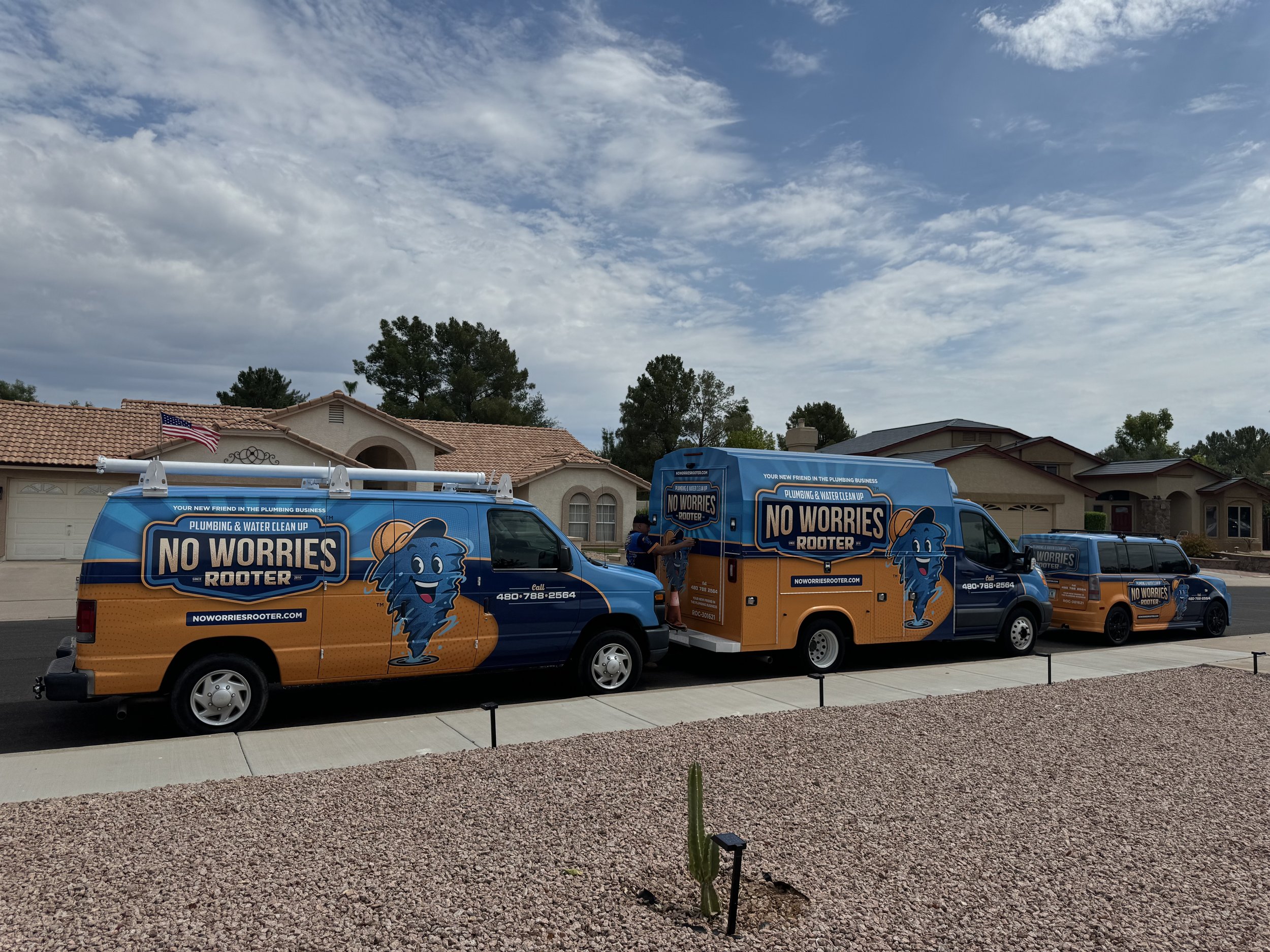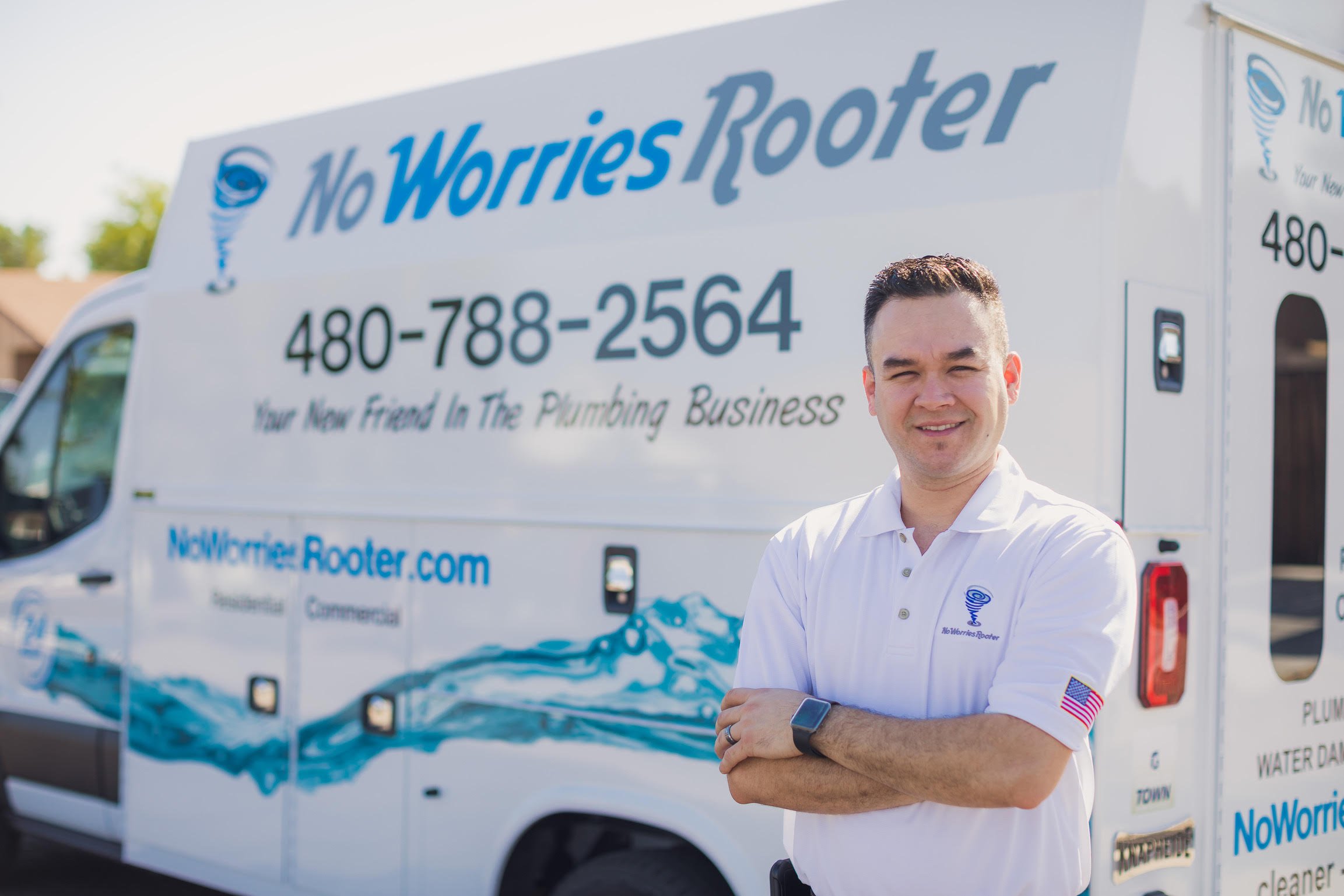
Water Damage Cleanup and Restoration in Gilbert and Surrounding Cities
Water Damage and Restoration Services From Your Gilbert Plumber
Water damage is one of the most common problems that homeowners experience. Leaky pipes, overflows, sewage backups, appliance malfunctions, and storm damage can all lead to water damage, mold and mildew. When water damage occurs, trust the experts at No Worries Rooter to help you through the process. We have the knowledge and expertise to find and repair the problem to prevent further damage, lead you through the clean-up process, and help with getting everything put back together. So whether it’s at your home or business, call us today at (480) 405-4497 to get started!
Water damage and plumbing leaks often go unnoticed by homeowners. However, it may be too late to prevent significant damage once they become aware of the issue, and plumbing leaks are dangerous to a home.
Small leaks in the walls can undermine the building’s support structure and cause mold and mildew build-up. More significant leaks can cause floods, damaged appliances, and furniture, and even make the area uninhabitable.
Burst pipes are another plumbing issue that can cause a lot of damage. Unlike leaks, burst pipes are rarely subtle and most often cause excessive damage the moment it happens.
In both scenarios, it’s crucial to shut off the water supply and locate the source of the leak to prevent additional damage. Unless homeowners locate the issue and address it promptly, the risk of significant water damage drastically increases. As a result, the safety of everyone in the house and the property’s functionality can suffer.
Residents in Gilbert and the surrounding cities should contact No Worries Rooter in case of any water damage caused by their plumbing system. We offer reliable, high-quality residential water damage cleanup and restoration services in Gilbert and the surrounding area.
Our Reviews
We aim to deliver complete satisfaction and a job well-done!
Categories of Water Damage
Clean Water Damage:
Clean water damage, considered Category 1 damage, is the least severe problem. This damage type is less severe because it involves clean water, meaning that the water is toxin- and sewage-free water that isn’t harmful to the property owners. The damage includes broken pipes, sinks, water supply lines, and overflowing bathtubs. It may also involve damage to appliances.
Gray Water Damage:
Category 2 water damage involves gray water produced from washing machines, toilets, and sump pump backups. Coming into contact with gray water isn’t necessarily harmful to human health. Still, removing the infected items and thoroughly disinfecting the home is necessary. If left untreated, these chemicals can prove problematic in the future.
Black Water Damage:
Category 3 damage involves black water and is the most extreme type of water damage a household faces. It requires immediate attention to mitigate the harmful effects and health risks for humans and animals. The water that causes damage in this category comes from rising flood waters, sewage, seawater, and ground and river water. In the event of such damage, it’s crucial to remove the affected items right away. The home must be disinfected after the rest of the property dries completely.
Water Damage from Burst Pipes and Leaks
Foundation:
If you have cracks in walls or floors or a tilting chimney, you may be aware that these are signs of a problem foundation. But many people don’t realize that difficulty opening and closing doors and windows can also be early signs that your home is shifting. And whether you have a new home or an old one, foundation problems often require major repairs. Foundation problems can be caused by the type of soil the house is built on, an improperly laid foundation or drainage problems. Whatever the cause, a bad foundation is bad news and, depending on the severity of the problem, can cost quite a bit.
Mold:
Water damage caused by your home’s plumbing system is not only unhealthy but expensive too. Be it a burst pipe or leaky hot water heater and/or other appliance, the end result is the same. And it can cause a lot of damage, even though you may not notice it right away. After something like this it’s important to dry out your home. If you don’t, mold can thrive.
Water Damage:
If your home has experienced some type of burst pipe/leak, major or minor, this isn’t something you can ignore. Beyond the possibility of mold, long-term water damage can cause rot, which can lead to all kinds of expensive repairs to the structure of your home. It’s difficult to estimate the cost of this type of burst pipe repair, but it can easily run into the thousands depending on how much wood needs to be replaced and how intrusive the repairs are.
Water Damage Cleanup and Restoration Process in Gilbert, Chandler, Tempe, Scottsdale, and Surrounding Cities
Inspection:
Inspection, which aims to classify the damage into one of three categories, and assessment is the first step in water damage cleanup and restoration. Water damage cleanup specialists arrive at the location and thoroughly examine the affected area. The process often includes advanced tools and equipment such as moisture detectors and hygrometers. On occasion, water absorption is so extreme that advanced equipment is needed to remove it.
Stopping the Water Flow:
If water is still flowing, professionals will take the steps needed to stop it. Where applicable, homeowners should turn off the water from the affected pipes immediately after they notice a leak. If it is not possible for the homeowner to do so, expert water damage professionals can do this after locating the damage in the inspection phase.
Extraction:
Extraction is the process of removing standing water. Left untreated, standing water can cause additional damage to the home. Therefore, this water must be removed as soon as possible, especially in flooded basements where standing water can create mold and mildew. This step includes tools such as mops, rags, and similar equipment.
Drying and Dehumidifying:
Once the standing water is removed from the affected area, the restoration company will dry and dehumidify the room using high-grade air movers, dehumidifiers, and commercial fans. These tools are also used to dry items that are not easily accessible.
Sanitizing and Disinfecting:
After the flooded area has been cleaned and dried, the next step is to perform thorough disinfection and sanitization of the property. Trained service professionals who understand the ins and outs of sanitization and safety requirements for homes that suffered water damage complete this step in the process. The cleaning may include wipe cleaning and wet or dry cleaning. The experts will wear special protective equipment, waterproof clothes, and gloves to protect themselves from inhaling any harmful substances.
Restoration:
The final step is performing the actual restoration of the space that suffered water damage. During this time, the contractors return the home to its previous condition. The items removed or damaged are replaced and repaired. Depending on the damage, these projects can be simple or extensive.













